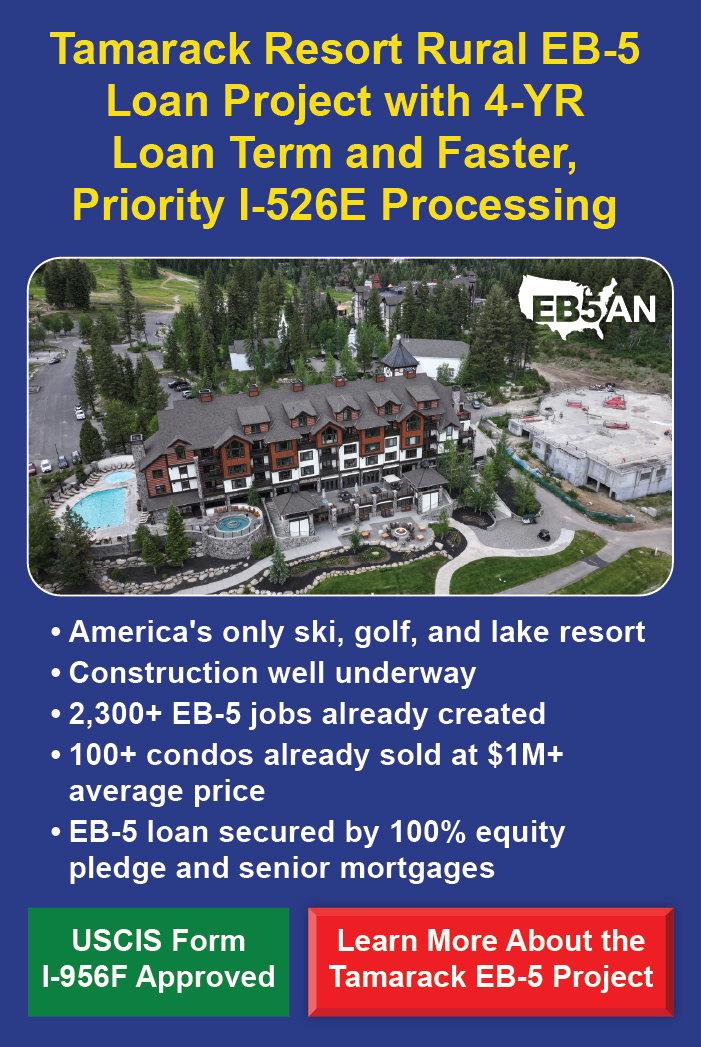
For many Indian nationals, obtaining a U.S. Green Card is a significant life goal. The EB-5 Immigrant Investor Program offers a unique pathway to achieve this objective, potentially bypassing the lengthy backlogs associated with other employment based immigrant visa categories.
However, navigating the EB-5 process requires careful planning and a thorough understanding of its specific requirements and challenges.
This article aims to provide Indian Green Card applicants with essential information about the EB-5 program, highlighting key considerations to keep in mind throughout the visa application process.
By addressing these crucial points, aspiring immigrants can make informed decisions and increase their chances of a successful EB-5 journey and becoming lawful permanent residents.
Understanding the EB-5 Immigrant Investor Program
Visa Processing Times and Backlogs for Indians
Fulfilling the EB-5 Job Creation Requirements
Family Considerations for Indian EB-5 Applicants
Currency Exchange and Fund Transfer Challenges
Indians’ Path to U.S. Citizenship
Choosing the Right Project for Indian EB-5 Investors
Understanding the EB-5 Immigrant Visa Investor Program
The EB-5 program, established by the U.S. Congress in 1990, allows foreign investors to obtain permanent residency in the United States by making a minimum investment in a U.S. business that creates economic growth and jobs for American workers.
The program has undergone several changes over the years, with the most recent significant update being the EB-5 Reform and Integrity Act of 2022 (RIA).
For Indian applicants, the EB-5 program offers several advantages over other employment-based visa categories, particularly in terms of processing times and visa availability.
Visa Processing Times and Backlogs for Indians

One of the most significant challenges facing Indian nationals seeking U.S. permanent residency is the extensive backlogs in popular employment-based visa categories such as EB-2 and EB-3. These backlogs can result in wait times spanning several decades for Indian applicants.
The EB-5 program, however, offers a potential solution to this issue. The RIA introduced reserved visa quotas for investments in targeted employment areas (TEAs), including rural areas and high-unemployment urban areas, as well as certain infrastructure projects.
These reserved visas are currently not backlogged, even though recent data suggests that this might change soon.
For EB-5 immigrant investors, particularly those investing in rural projects, processing times can be as quick as 12 months via priority date processing.
This is a stark contrast to the multi-year or even multi-decade waits associated with other employment-based categories, as well as the traditional “unreserved” EB-5 category.
Additionally, United States Citizenship and Immigration Services (USCIS) now allows for concurrent filing of Forms I-526E (Immigrant Petition by Alien Entrepreneur) and I-485 (Application to Register Permanent Residence or Adjust Status) for eligible applicants.
This provision can significantly expedite the process for investors already in the U.S. on valid nonimmigrant visas, allowing them to obtain work and travel authorization while their EB-5 petition is pending.
It’s important to note that processing times can vary based on individual circumstances and USCIS workload. Applicants should consult with an experienced immigration lawyer to get the most up-to-date information on processing times and strategies to optimize their application timeline.
Fulfilling the EB-5 Job Creation Requirements
Unlike other employment-based Green Card categories that require employer sponsorship, the EB-5 program allows immigrant investors to qualify for permanent residency based on their capital investment and how many jobs they create.
This aspect of the program offers greater independence and flexibility for applicants, but also comes with its own set of requirements and considerations.
Key points regarding job creation in EB-5 applications include:
- Each EB-5 capital investment must create or preserve at least 10 full-time jobs for U.S. workers.
- Jobs can be created directly (employees of the EB-5 commercial enterprise) or indirectly (jobs resulting from the economic impact of the EB-5 project).
- Jobs must be created within a reasonable timeframe and maintained for at least two years.
- Regional center investments can count both direct and indirect jobs, while direct investments can only count direct jobs.
When considering an EB-5 investment, Indian applicants should pay close attention to the project’s job creation projections and methodology.
Working with reputable regional centers or experienced EB-5 professionals can help ensure that the chosen investment meets the program’s employment requirements.
Family Considerations for Indian EB-5 Applicants

One of the attractive features of the EB-5 program is that it extends immigration benefits to the principal investor’s immediate family members. This includes the investor’s spouse and unmarried children under 21 years of age.
Key considerations for family members in EB-5 applications:
- Inclusion in initial petition: All eligible family members should be included in the investor’s initial I-526E petition.
- Derivative benefits: Family members receive the same immigration benefits as the principal investor, including a conditional Green Card.
- Age-out protection: The Child Status Protection Act (CSPA) may protect some children from “aging out” of eligibility.
- Education opportunities: Children of EB-5 investors may be able to attend U.S. schools and universities as domestic students.
- Work authorization: Spouses of EB-5 immigrant investors can apply for work authorization while adjusting status in the U.S., and work freely as EB-5 Green Card holders.
Indian citizens should carefully consider their family’s long-term plans when pursuing an EB-5 investment. This includes evaluating educational opportunities for children, career prospects for spouses, and the overall impact of relocating to the United States on family dynamics.
It’s also important to maintain proper documentation and stay informed about any changes in family circumstances that may affect the EB-5 application.
Working closely with an experienced immigration lawyer can help ensure that all family members maintain their eligibility throughout the EB-5 process.
Currency Exchange and Fund Transfer Challenges
For Indian EB-5 investors, one of the most significant practical challenges is navigating the complexities of currency exchange and international fund transfers.
India’s foreign exchange regulations, particularly the Reserve Bank of India’s (RBI) Liberalized Remittance Scheme (LRS), can impact the process of transferring the required investment amount to the United States.
Key points to consider regarding fund transfers:
- Annual limits: The LRS currently allows Indian residents to remit up to $250,000 per financial year for various purposes, including overseas investments. Many Indian investors overcome this by using family pooling strategies or legal pathways like remitting through close relatives. Working with experts to structure fund transfers can help Indian investors meet EB-5 requirements.
- Multiple remittances: Immigrant investors may need to plan for multiple transfers over time to meet the EB-5 investment requirement.
- Source-of-funds documentation: USCIS requires comprehensive documentation proving the lawful source of investment funds.
- Compliance with Indian regulations: Investors must ensure all fund transfers comply with RBI guidelines and other applicable Indian and immigration laws.
- Timing considerations: Applicants are advised to plan for potential delays in fund transfers when structuring the EB-5 visa investment timeline.
Indians’ Path to U.S. Citizenship

While obtaining a Green Card through the EB-5 visa program is a significant achievement, many investors ultimately aim for U.S. citizenship.
Understanding the path from EB-5 investor to naturalized U.S. citizen is crucial for long-term planning. Key milestones in the journey to U.S. citizenship include:
- Conditional residency: EB-5 investors initially receive a two-year conditional Green Card.
- Removal of conditions: Investors must file Form I-829 to remove conditions and obtain a permanent Green Card.
- Naturalization eligibility: Green Card holders can apply for U.S. citizenship after five years of continuous residence, which includes the initial two-year residency.
- Physical presence requirement: Applicants must be physically present in the U.S. for at least half of the five-year period.
- Civics and language tests: Citizenship applicants must pass tests on U.S. history, government, and English language proficiency.
- Oath of Allegiance: The final step in becoming a U.S. citizen is taking the Oath of Allegiance.
It’s important to maintain good moral character and comply with all U.S. laws and regulations throughout the Green Card and naturalization process. Any violations or extended absences from the U.S. could potentially impact eligibility for citizenship.
Choosing the Right Project for Indian EB-5 Investors

Selecting an appropriate EB-5 project is crucial for the success of an investor’s immigration and visa applications and the security of their investment.
Indian applicants should consider several factors when evaluating potential EB-5 projects, such as project location, EB-5 visa category, developer track record, exit strategy, employment creation potential, and USCIS compliance.
Working with reputable EB-5 regional centers can help Indian investors navigate the project selection process and conduct thorough due diligence.
It’s important to remember that while the immigration benefits of EB-5 are significant, the investment itself carries risks, and investors should carefully evaluate the financial aspects of any potential project.
EB5AN’s regional center projects are meticulously structured to meet USCIS requirements, with a focus on job creation, financial viability, and timely completion. Book a free one-on-one consultation with one of our experts today.











